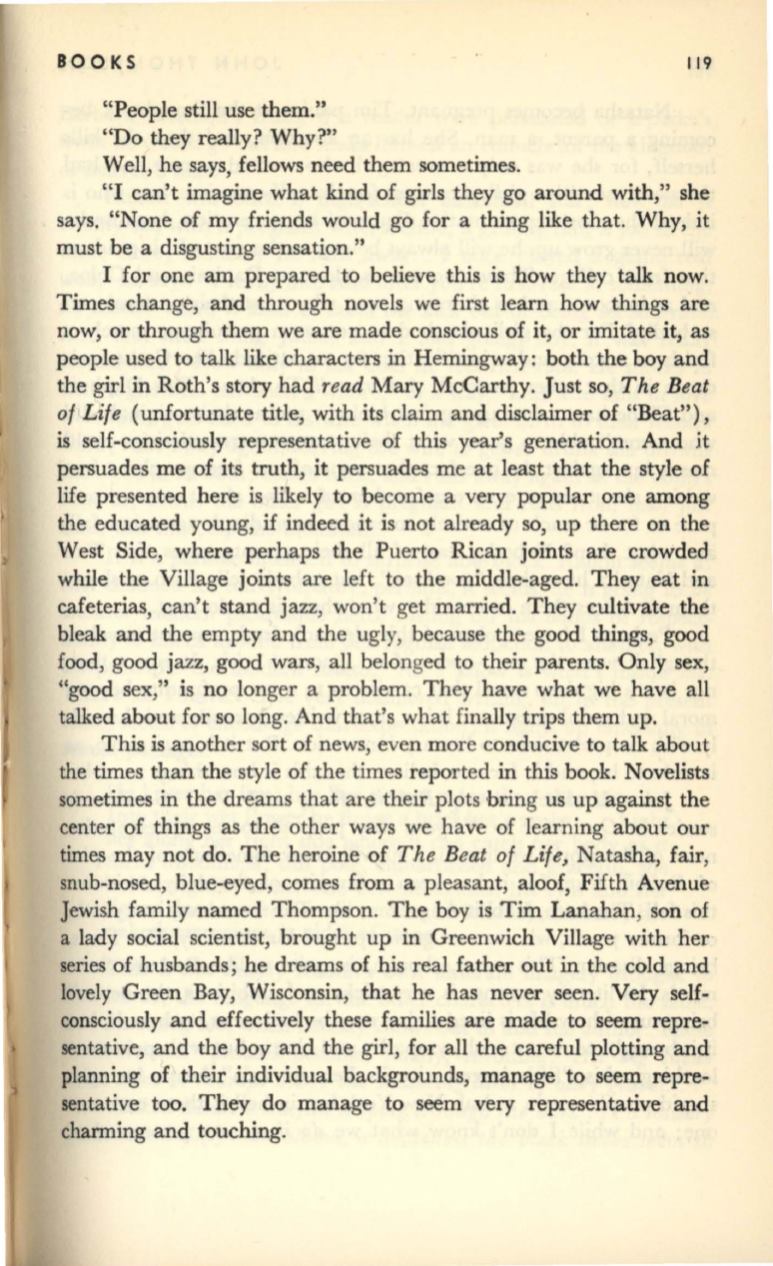
BOO KS
"People still use them."
"Do they really? Why?"
Well, he says, fellows need them sometimes.
119
"I can't imagine what kind of girls they go around with," she
says. "None of my friends would go for a thing like that. Why, it
must be a disgusting sensation."
I for one am prepared to believe this is how they talk now.
Times change, and through novels we first learn how things are
now, or through them we are made conscious of it, or imitate it, as
people used to talk like characters in Hemingway: both the boy and
the girl in Roth's story had
read
Mary McCarthy. Just so,
The Beat
of Life
(unfortunate title, with its claim and disclaimer of "Beat")'
is self-consciously representative of this year's generation. And it
persuades me of its truth, it persuades me at least that the style of
life presented here is likely to become a very popular one among
the educated young, if indeed it is not already so, up there on the
West Side, where perhaps the Puerto Rican joints are crowded
while the Village joints are left to the middle-aged. They eat in
cafeterias, can't stand jazz, won't get married. They cultivate the
bleak and the empty and the ugly, because the good things, good
food, good jazz, good wars, all belonged to their parents. Only sex,
"good sex," is no longer a problem. They have what we have all
talked about for so long. And that's what finally trips them up.
This is another sort of news, even more conducive to talk about
the times than the style of the times reported in this book. Novelists
sometimes in the dreams that are their plots bring us up against the
center of things as the other ways we have of learning about our
times may not do. The heroine of
The Beat of Life,
Natasha, fair,
snub-nosed, blue-eyed, comes from a pleasant, aloof, Fifth Avenue
Jewish family named Thompson. The boy is Tim Lanahan, son of
a lady social scientist, brought up in Greenwich Village with her
series of husbands; he dreams of his real father out in the cold and
lovely Green Bay, Wisconsin, that he has never seen. Very self–
consciously and effectively these families are made to seem repre–
sentative, and the boy and the girl, for all the careful plotting and
planning of their individual backgrounds, manage to seem repre–
sentative too. They do manage to seem very representative and
channing and touching.


